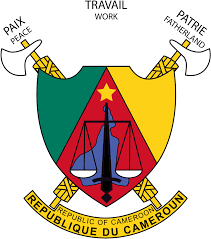Cameroon
Cameroon Home

A virtual guide to Cameroon, the country in Central Africa is bordered by the Gulf of Guinea (Atlantic Ocean) in the southwest. Cameroon borders Nigeria in the northwest, the Republic of the Congo (Brazzaville), Gabon and Equatorial Guinea in the south, the Central African Republic and Chad in the east, and it has a narrow lakefront at Lake Chad in the north.
With an area of 475,650 km², the country is almost as large as Spain or slightly larger than the US state of California. Its southern and coastal areas are characterized by dense vegetation, a vast river system and a hot, humid climate with abundant rainfall. The largest city is Douala, the country's main port and economic capital with its commercial and industrial activities, Yaounde is the second-largest city and the political capital of Cameroon.
Other major urban centres are Edea, characterized by its heavy industry and its hydro-power plant, Limbe, headquarters of the oil industry and Kribi terminal of the Chad-Cameroon pipeline. Cameroon has a population of 24 million people (in 2016), English and French are official languages, however, French is by far the most commonly used language.
Background:
The name Cameroon is derived from the Portuguese word, Camarones, meaning shrimps. As Portuguese sailor Ferdanando Poo arrived in 1472 at the Wouri River in Douala and discovered so many shrimps in the river he decided to call it Rio Dos Camarones (River of shrimps, in Portuguese). It was from this word that the territory derived its name which is now spelt in various forms: Spanish spelt it Cameroes; Germans, Kamerun; English, Cameroon; and French, Cameroun.
On January 1st 1960 the French Sector became independent under the new name of Cameroon Republic. Following agitation for independence by the Southern Cameroons - before the name was changed to West Cameroon - a plebiscite was held in that sector of Cameroon on February 11th 1961 under the United Nations supervision. The result of the plebiscite was overwhelming for reunification (233,571 against 97,741) and gave Southern Cameroon automatic independence and unification, which was achieved on 1 October 1961. Thus after the reunification of both sectors, the Federal Republic of Cameroon was born.
After a referendum in May 1972, Cameroon became the United Republic and by a Presidential Decree of 1984, it became the Republic of Cameroon.
Sign in to add your comment.
Suggested Pages
Click the label to explore South Africa's Veterinarian Universities
Official Names:
Republic of Cameroon (eng)
Short form: Cameroun/Cameroon
ISO Country Code: cm
Time:
Local Time = UTC +1h
Country Calling Code: +237
Capital City: Yaounde (pop. 1.1 million)
Other Cities: Douala, major seaport and commercial capital (1.3 million), Garoua (424,312), Maroua (409,546), Bafoussam (319,457), Bamenda (321,490), Nkongsamba (166,262), and Ngaoundere (216,300).
Government:
Republic; with a strong central government dominated by the president.
Independence: 1 January 1960 (for areas formerly ruled by France) and
1 October 1961 (for territory formerly ruled by Britain).
Constitution: 2 June 1972, last amended in January 1996.
Geography:
Location: Central West Africa bordering the Bight of Biafra (part of the Gulf of Guinea and the Atlantic Ocean)
Area: 475,650 km² (183,650) sq. mi.).
Terrain: Northern plains, central and western highlands, southern and coastal tropical forests.
Highest peak: Mt. Cameroon (13,353 ft.).
Climate: Northern plains, the Sahel region--semiarid and hot (7-month dry season);
Central and western highlands where Yaounde is located--cooler, shorter dry season; southern tropical forest--warm, 4-month dry season; Coastal tropical forest, where Douala is located--warm, humid year-round.
